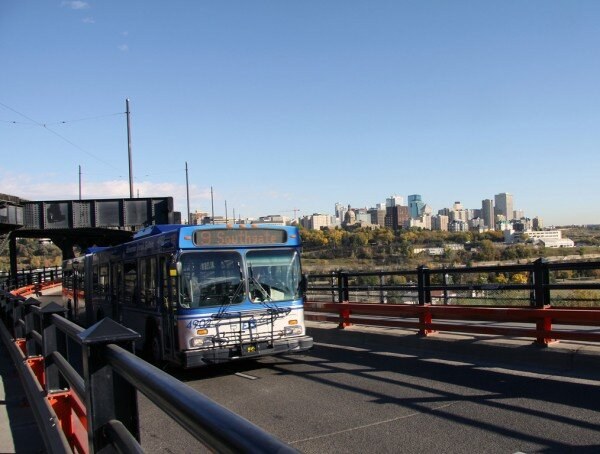Many low income Edmontonians can’t afford a private automobile, and therefore rely on public transit to get to their jobs, schools, medical appointments, grocery shopping and other daily activities.
The introduction this September of a discounted transit pass through the Ride Transit Program is a game changer for these Edmontonians.
While many organizations including mine have been advocating for a discounted low income transit pass for years, there were two recent developments that provided decisive momentum for this initiative. The first was identifying the need for such a pass as a key action item championed by EndPovertyEdmonton. The second was the decision of the Alberta Government to cost-share for three years the funding for this initiative in both Calgary and Edmonton.
The many positive features of the $35 per month discounted transit pass include its name. Like the Leisure Access Program, the Ride Transit Program is a name that does not stigmatize Edmontonians by identifying them as low income. Ride Transit also sends the message that the program is as much about encouraging the use of transit as it about making it more affordable. If the U-Pass for post-secondary students is any indication with ridership doubling since their introduction, revenue from the increased use of transit will partially offset the cost of the Ride Transit Program.
The Ride Transit Program – along with a companion program that provides free transit passes to highly vulnerable individuals - should help reduce transit compliance and enforcement costs. Some people ride the LRT without paying the fare and end up getting tickets they can’t afford to pay. These unpaid fines turn into warrants, which turn into arrests and stints in Remand, all of which are paid for by tax dollars.
Administrative costs are being kept to a minimum by using the same eligibility criteria and income thresholds for a low income transit pass as are already in place for the city’s Leisure Access Program (LAP). The same application process as LAP makes it easier for qualifying Edmontonians facing language and other barriers to access both services.
Ride Transit is more equitable than the previous hodge-podge of monthly pass. Working poor Edmontonians and social assistance recipients receive the same discounted monthly pass as those on Assured Income for the Severely Handicapped (AISH). People with severe disabilities who require DATS for their mobility needs pay the same discounted fare as those who can ride buses and the LRT.
As with any new program, there are bound to be a few implementation hiccups. For instance, some Edmontonians who previously received the discounted AISH transit pass are concerned that their ability to get their passes mailed monthly and paid for through automatic bank withdrawal is being discontinued.
The lives of up to 40,000 eligible Edmontonians are being improved as they can better afford to take public transit to their jobs, schools, and other important community services. Everyone in our city benefits by having more people working and contributing.
John Kolkman is the Research Associate for the Edmonton Social Planning Council, a non-profit social research organization focusing on finding solutions to poverty and low income challenges. Since joining the Council in May 2006, John has researched, published, and presented on many social policy issues. These include poverty, wealth and income inequality, removing employment barriers for those with low and modest incomes, affordable housing and transit, and neighbourhood revitalization.
The views and opinions expressed in this article are those of the authors and do not necessarily reflect the official policy or position of EndPovertyEdmonton.

